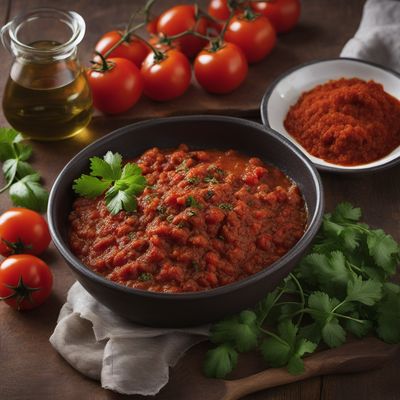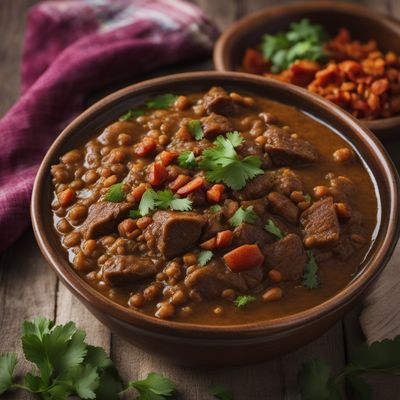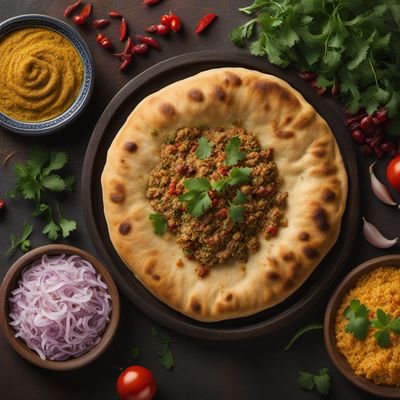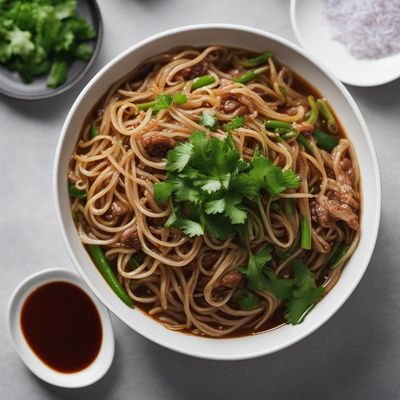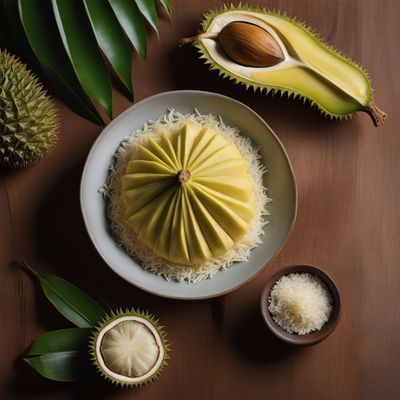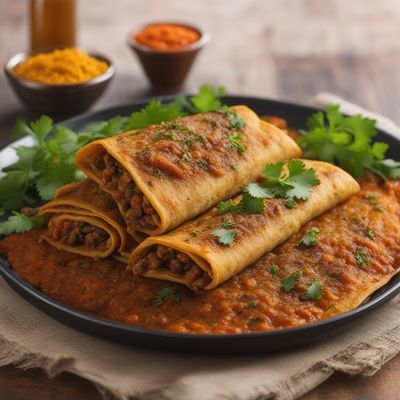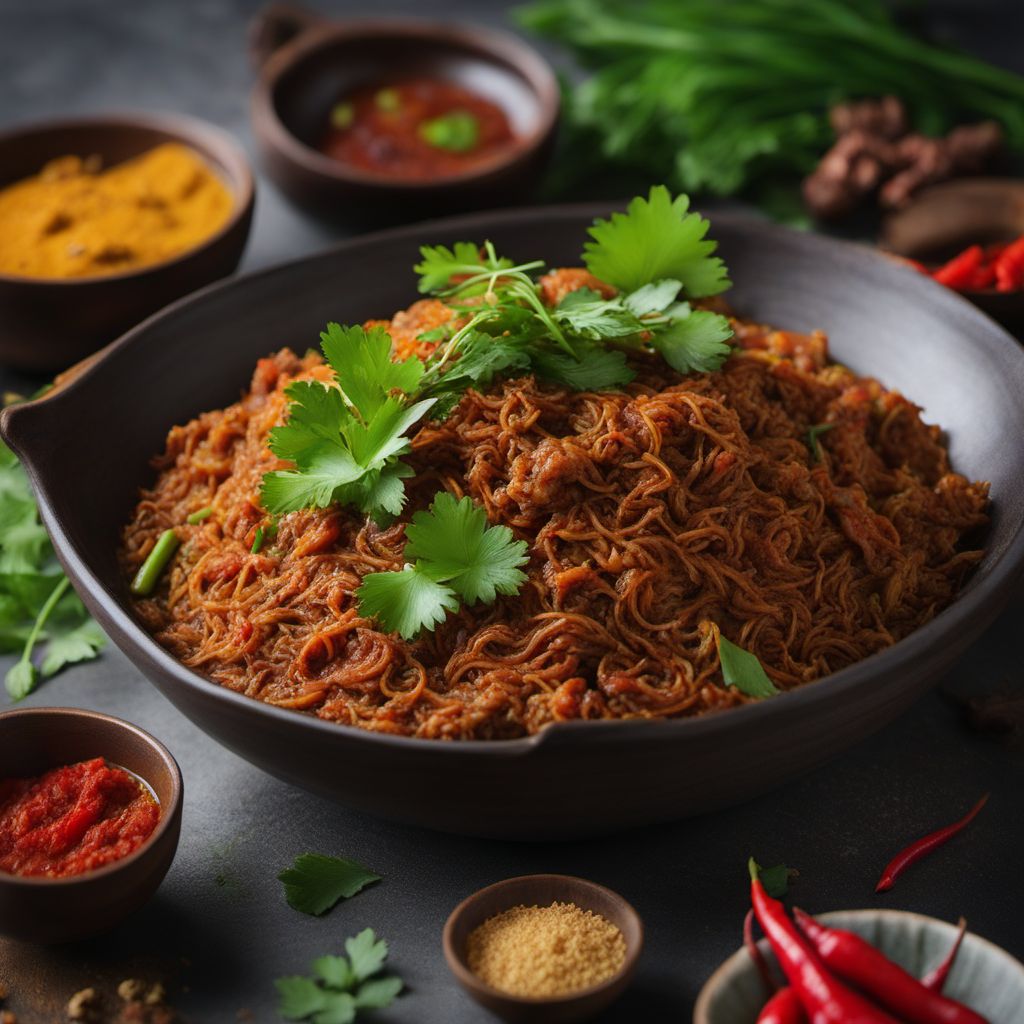
Recipe
Malooga Rendang
Spicy Rendang Noodles: A Malaysian Twist on Yemeni Malooga
4.6 out of 5
Indulge in the rich flavors of Malaysian cuisine with this fusion recipe of Malooga Rendang. This dish combines the traditional Yemeni Malooga with the aromatic spices and vibrant ingredients of Malaysian cuisine, resulting in a tantalizing and satisfying meal.
Metadata
Preparation time
20 minutes
Cooking time
1 hour
Total time
1 hour 20 minutes
Yields
4 servings
Preparation difficulty
Medium
Suitable for
Halal, Gluten-free, Dairy-free, Nut-free, Low sugar
Allergens
N/A
Not suitable for
Vegan, Vegetarian, Paleo, Keto, Low-carb
Ingredients
In this adaptation, the traditional Yemeni Malooga is transformed into a Malaysian delight by incorporating the flavors and ingredients commonly found in Malaysian cuisine. The original dish is typically made with flatbread and served with a meat-based stew. In the Malaysian version, the flatbread is replaced with noodles, and the stew is transformed into a rendang sauce, which is a slow-cooked, spicy coconut-based sauce commonly used in Malaysian cuisine. We alse have the original recipe for Malooga, so you can check it out.
-
250g (8.8 oz) rice noodles 250g (8.8 oz) rice noodles
-
500g (1.1 lb) beef, thinly sliced 500g (1.1 lb) beef, thinly sliced
-
400ml (13.5 fl oz) coconut milk 400ml (13.5 fl oz) coconut milk
-
2 stalks lemongrass, bruised 2 stalks lemongrass, bruised
-
3 kaffir lime leaves 3 kaffir lime leaves
-
2 cm (0.8 inch) galangal, sliced 2 cm (0.8 inch) galangal, sliced
-
2 cm (0.8 inch) ginger, sliced 2 cm (0.8 inch) ginger, sliced
-
3 cloves garlic, minced 3 cloves garlic, minced
-
2 red chilies, sliced 2 red chilies, sliced
-
1 tsp turmeric powder 1 tsp turmeric powder
-
1 tsp coriander powder 1 tsp coriander powder
-
1 tsp cumin powder 1 tsp cumin powder
-
1 tbsp tamarind paste 1 tbsp tamarind paste
-
2 tbsp vegetable oil 2 tbsp vegetable oil
-
Salt, to taste Salt, to taste
-
Fresh cilantro, for garnish Fresh cilantro, for garnish
-
Pickled vegetables, for serving Pickled vegetables, for serving
Nutrition
- Calories (kcal / KJ): 450 kcal / 1884 KJ
- Fat (total, saturated): 25g, 18g
- Carbohydrates (total, sugars): 35g, 2g
- Protein: 25g
- Fiber: 3g
- Salt: 1.5g
Preparation
-
1.Cook the rice noodles according to the package instructions. Drain and set aside.
-
2.In a large pan, heat the vegetable oil over medium heat. Add the minced garlic, sliced ginger, sliced galangal, and sliced red chilies. Sauté until fragrant.
-
3.Add the sliced beef to the pan and cook until browned.
-
4.Stir in the turmeric powder, coriander powder, and cumin powder. Cook for another minute.
-
5.Pour in the coconut milk and add the bruised lemongrass stalks and kaffir lime leaves. Bring to a simmer and let it cook for about 1 hour, or until the sauce thickens and the flavors meld together.
-
6.Stir in the tamarind paste and season with salt to taste.
-
7.Add the cooked rice noodles to the pan and toss until well coated with the rendang sauce.
-
8.Remove the lemongrass stalks and kaffir lime leaves.
-
9.Serve the Malooga Rendang hot, garnished with fresh cilantro, and accompanied by pickled vegetables.
Treat your ingredients with care...
- Lemongrass — Bruise the lemongrass stalks by lightly pounding them with a rolling pin or the back of a knife to release their flavor.
- Galangal — If you can't find fresh galangal, you can substitute it with dried galangal powder. Use 1 teaspoon of dried galangal powder for every 2 centimeters of fresh galangal.
- Tamarind paste — If tamarind paste is not available, you can use lime juice as a substitute. Start with 1 tablespoon of lime juice and adjust according to your taste preference.
Tips & Tricks
- For an extra kick of heat, add a few slices of bird's eye chili to the rendang sauce.
- If you prefer a milder flavor, remove the seeds from the red chilies before slicing.
- To save time, you can use pre-cooked rice noodles instead of cooking them from scratch.
- Adjust the spiciness of the dish by adding more or less red chilies according to your taste preference.
- For a vegetarian version, replace the beef with tofu or tempeh and adjust the cooking time accordingly.
Serving advice
Serve Malooga Rendang hot, allowing the flavors to fully develop. Garnish with fresh cilantro for a burst of freshness and serve with a side of pickled vegetables to complement the rich and spicy flavors of the dish.
Presentation advice
Present the Malooga Rendang in a vibrant and colorful manner by arranging the noodles neatly on a plate. Garnish with a sprinkle of fresh cilantro and serve with a side of pickled vegetables, adding visual appeal and contrasting flavors to the dish.
More recipes...
For Malooga
For Yemeni cuisine » Browse all
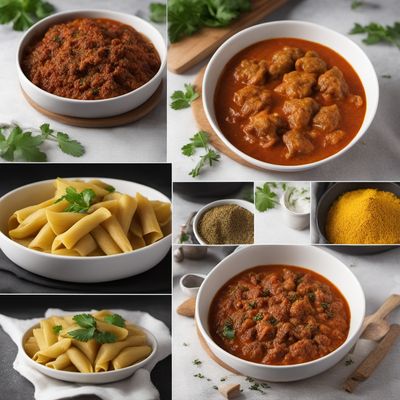
Yemeni-inspired Stuffed Pasta with Spiced Meat - Agnolotti del Plin
Savory Yemeni Fusion: Spiced Meat Stuffed Pasta Delight
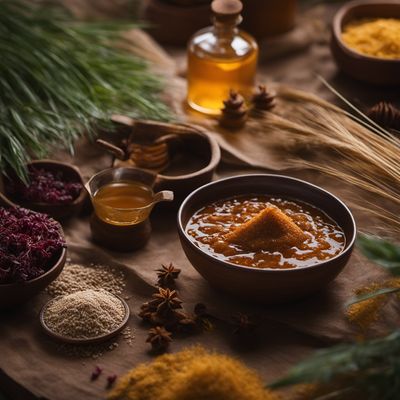
Yemeni Aseeda with Honey and Ghee
Golden Delight: Yemeni Aseeda Infused with Sweet Honey and Rich Ghee

Yemeni Spiced Chicken with Fragrant Rice
Saffron-infused Chicken Mathrooba: A Yemeni Delight
More Yemeni cuisine dishes » Browse all

Hasa adas
Lentil soup
Hasa adas is a traditional Iraqi soup made with lentils and lamb.

Madfoon
Madfoon is a popular Middle Eastern dish made with seasoned meat that is cooked in an underground pit. It is typically served with rice and vegetables.

Shaiyah
Shaiyah is a traditional Yemeni dish made with lamb, rice, and spices. The dish is known for its complex flavors and aromatic spices.
More Malaysian cuisine dishes » Browse all

Rotiboy
Rotiboy is a popular Malaysian pastry that is filled with butter and coffee-flavored cream. It is a delicious and indulgent treat that is perfect...
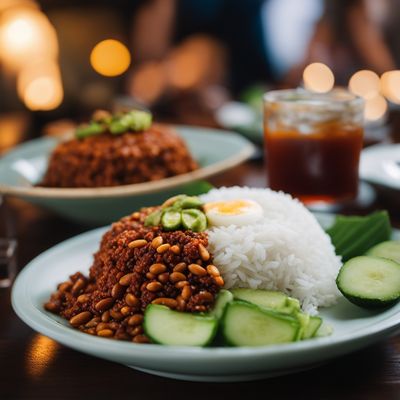
Nasi lemak
Nasi lemak is a traditional Malaysian dish that is made with coconut rice, fried anchovies, peanuts, cucumber, and a spicy sambal sauce. It is a...

Ayam percik
Ayam Percik
Ayam percik is a Malaysian grilled chicken dish that is marinated in a spicy coconut milk mixture. The dish is known for its smoky and slightly...
